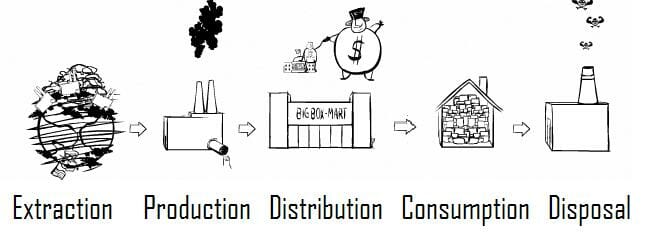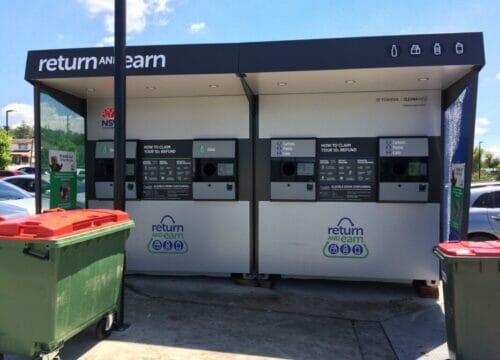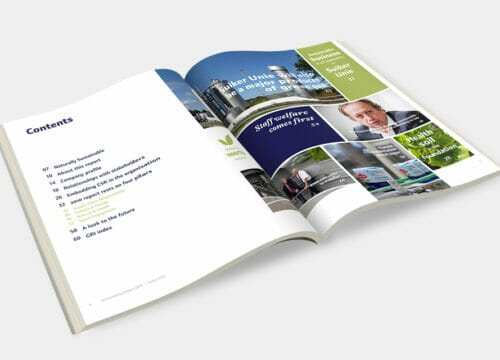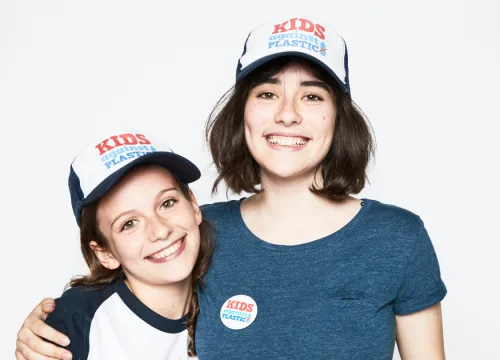The Children’s Book Project is a charity that aims to make sure every child has their very own books to read and enjoy. 📚✨
Responsible Consumption and Production
Making and using things that don’t harm people or the environment

1. THE PROBLEM
Have you ever thought about the story of your stuff? Where did it come from and how was it made?
Everything we use in the world once came from nature and humans have got very good at using nature to make products that do exactly what we want them to do.
The problem is that our ways of making things often aren’t so good for the planet. They might involve chopping lots of trees down or burning lots of fossil fuels. Or worse still, sometimes the people who make our things aren’t treated so well. They might not be paid enough or might be made to work really long hours.

2. The Solution
So what can we do to help?
We need to start producing and consuming products more responsibly. To do this we need to follow the mantra of reducing, reusing and recycling, where reducing means making and producing less, re-using means using things more than once and recycling means turning old material into new things. On top of this, we also need to monitor the way that companies treat their workers to improve working conditions.

3. Take Action
There are lots of ways that anyone, including you, can make a difference to make our production and consumption more responsible. For example, you could: mend and reuse old products instead of buying new ones or make a poster to teach people about why it is important to buy Fair Trade products.
Everyone can take action to make real change. What will you do?



4. CHARITIES
There are lots of charities that need your help to make our production and consumption more responsible.
For example, RECOUP aims to increase plastic recycling, Kids Against Plastic teaches people about plastic pollution and what they can do to help and Anti-Slavery International is working to end modern slavery around the world.
See how you can support them in their amazing work.
Have you ever thought about your stuff?
Everything around you right now came from the same place – nature. Your breakfast porridge was probably made from milk and oats, wheat or maize. The electronic device you are on right now is probably made from aluminium, glass and plastic. The pencil in your pencil case is made from graphite and wood. And your socks are made of cotton.
With every year that passes, humans become better and better at using natural resources to make products that help us do exactly what we want to do.
- We grow foods all around the world and ship them to countries that don’t have the right climate for them. For example, the UK’s climate is terrible for growing bananas, but you can still buy and eat bananas if you live in the UK.
- We make plastic bottles to contain drinks.
- We make batteries to power electronic products.
Take a minute to look around the room you are in and pick out a few different objects.
Think about:
- WHO made them?
- WHAT were they made of?
- WHERE were they made?
- WHEN will they be used until?
- What will happen when they can no longer be used? Will they be recycled or go to landfill?
The things you looked at would have been made of wood, metal, plastic, glass or even something else. The one thing they have in common is that all of the things used to make them, once came from natural resources. Sadly, our ways of making things out of natural resources often have damaging effects on people and the planet. It might be made by someone who isn’t treated well or paid fairly for their hard work. Or it might travel across the world in a fuel-guzzling vehicle. The object might even be thrown away after a single use, like a disposable coffee cup. No matter who made it, how it travelled and how long it was used, at some point, the object will reach the end of its life span and will be thrown away – probably ending up in landfill.
The problem
3 PLANETS
WILL BE NEEDED BY 2030 TO SUSTAIN OUR LIFESTYLES
21%
OF ALL GREENHOUSE GASES ARE FROM MANUFACTURING
Our stuff is all so amazing and it makes our lives so much better – but have humans taken things too far?
The way things are being done now is not sustainable. Sustainability is about doing things in such a way that you can carry on doing them like that for a long time. For example, if you start running a marathon by sprinting at top speed, your coach will tell you that it isn’t sustainable. This means that you won’t be able to keep that pace up in the long run. At the moment, the way that humans are making and using (producing and consuming) stuff, is very far from sustainable.
Right from the moment that materials for a product are taken from nature, up to the moment the product is thrown away, the environment (and people), are being harmed.
Let’s take a brief look at the impact on both planet and people throughout each stage below.

1. Extraction
This is how we get the materials that we need from nature. It includes chopping down trees, digging deep underground for minerals (such as metals, fossil fuels and clay), fishing sea animals out the oceans and draining water from waterbodies.
The biggest problem at this stage is that too many of these resources are being extracted too fast! Humans are using more natural resources than ever before and the best guess is that if we continue as we are doing, we will need 3 planets to provide enough natural resources to sustain our lifestyles by 2050. And while we can plant more trees and wait for them to grow if we have to, what do we do when a certain mineral we’re mining from the ground just runs out?
Our most threatened natural resources include:
What would life be without water? It would be impossible. You need it for drinking, cooking, cleaning, washing and producing the food you eat and products you use.
Nearly 70% of the earth is covered in water, but only 2.5% of it is freshwater that humans can use.
As populations grow and more people need water, there isn’t always enough water and people don’t always live close to a river. This is why underground water sources, called aquifers are quite handy. But we are draining water reserves faster than they are being replenished.
Watch the video below about underground water and how we get hold of it. The video talks specifically about America, but underground water exists everywhere.
Fossil fuels are used to produce energy.
Ninety per cent of the world’s energy comes from burning fossil fuels. They are used to produce heat in homes, power cars, supply electricity, make plastics and so much more!
Fossil fuels are buried deep inside the Earth so they need to be dug up from underground in a process called mining.
The problem with fossil fuels is that burning them to produce energy releases carbon dioxide into the atmosphere. Fossil fuels are also non-renewable, meaning there is only a limited amount of them and it is not possible to make more. Watch the video below about fossil fuels, how they were formed, where they are found and how they are extracted.
Trees are famous for the fact that they are used for making wooden furniture and paper. But trees are also an important tool for fighting climate change. Forests are like big sponges that absorb carbon dioxide from the air.
Unfortunately, trees are being chopped down much faster than they can grow! A mighty 48 football fields’ worth of trees are lost every minute. Watch the video below about why we are cutting down trees and what effects this has.
2. Production
When natural resources are turned into products, a lot of energy is used to power machines in factories. Much of this energy comes from burning fossil fuels, which release greenhouse gases, contributing to climate change. In fact, 21% of all greenhouse gas emissions are from manufacturing.
And if all that wasn’t bad enough, people are often harmed while making the products that everyone enjoys so much.
Businesses are under pressure to sell things as cheaply as possible (because people like to buy cheap things!), so they have to cut their costs of production. Sometimes the easiest way to do that is by not treating workers very well.
Some farms and factories have:
When factories are uncomfortable or unsafe to work in. For example, they might have dangerous fumes and workers may not be given the safety gear that they need (such as a gas mask).
When people don’t treat their workers well. They expect them to work very long days and often they don’t even get paid for the extra hours that they do.
When bosses pay their workers very little, even less than the minimum wage.
3. Distribution
Things need to be taken from the places they are made to the shops where people can buy them.
The trouble is that to transport things, they need to be packaged so that they stay protected. This is why you buy:
- fruit juice in a plastic bottle
- eggs in a cardboard box
- a glass vase in bubble wrap.
There are lots of different types of packaging (plastic, cardboard, glass and metal) and they are good at different things. But all of them create problems for the environment.
No matter how things are packaged, there is a big problem with distribution. When things travel in ships, trucks and planes, the vehicles guzzle up fossil fuels and emit carbon dioxide, contributing to climate change. The bigger the parcels are, the more space they take up in vehicles, so when companies use too much packaging, they end up guzzling up more fossil fuels in transport too!


4. Consumption
Things are made to be consumed. The biggest problem is how long people use the things they buy. Sadly, many companies don’t want products to last too long, because that way people can buy from them again. This is called obsolescence.
There are two types of obsolescence:
This is when products are made not to last long on purpose. In many electronic devices such as phones and computers, older versions of software are designed to stop working after a couple of years, even though they technically could still work. This forces people to buy a new things.
This is when people are convinced to throw away stuff that is still perfectly useful. Companies regularly change the way things look so that everyone can tell that you bought your stuff a couple of years ago, so they use peer pressure to get you to buy new ones. Fashion is a prime example of this. For example, some years wearing chunky high heels is trendy and other years wearing skinny high heels is trendy. So every year women feel they need to buy new shoes, even though their old ones are still fine to wear.
5. Disposal
So, what happens when stuff can no longer be used?
If you had to keep every piece of rubbish that you would usually throw away in a pile in the corner of your room, what would it look like after a week? And what about a year? Think about it – everyone in your school, community, city or even the world is creating their pile all the time and though nobody keeps it in their house or backyard, all that rubbish needs to go somewhere!
But there are two main problems with this type of waste disposal:
As rubbish rots in the ground, it makes methane and carbon dioxide, two greenhouse gases that cause climate change.
Plastics, though they are so useful, are creating massive problems, since it is thought that some of them could take hundreds of years to break down. Plastics from landfill and rubbish dumps, as well as litter in the streets often get swept into the sea. When plastics build up in the sea it harms animals who confuse it for food and eat it or who get trapped in it. The plastics problem has become so bad that there are patches of rubbish in the oceans now! The biggest one is called the Great Pacific Garbage Patch. Watch the video on the right about plastic pollution and the Pacific Garbage Patch.
Take a Guess
The Solution
People all around the world are making big changes to produce and consume products more responsibly.
However, if we want to live in a world where everyone’s needs are met without harming people or the planet, we need more change to happen. Everyone needs to start making and using things in a more responsible way so that:
- We aren’t extracting more natural resources than we need from our planet
We aren’t throwing more things away than we need to
People are not being harmed in the process.
Humans need to change their current attitude of taking, making and wasting. Instead, everyone should focus on reducing, reusing and recycling, so that the goods of today can become resources of tomorrow. Factories also need to be improved so that working conditions remain safe and fair.
So, what does this involve and how can it be done? Let’s get stuck into just a few of the tools that are available.
1. Reduce
Reducing means making and using less. To do this, people need to get to a point where they no longer want to buy more all the time. This is known as reducing demand.
Financial Measures
One of the key ways to do reduce demand is by using financial measures to make it easier for people to make the right choices.
For example, many coffee shops around the world have started giving discounts if you bring your own reusable takeaway cup. Costa, Starbucks, Pret a Manger, Greggs and M&S are just a few chains that do this! They offer between 20p and 50p off per hot drink if you bring your own cup! People who buy a coffee every morning on their way to work could save up to £2.50 a week and £130 over the course of a year, all while stopping 260 disposable cups from ending up in landfill!
The opposite can also be done. Products that aren’t sustainable can be made more expensive. This encourages people to stop using those products. For example, many governments are introducing plastic bag charges, meaning that shops now charge people for reusable plastic bags. Because people don’t want to pay extra, they are more likely to bring their own bags.


2. Re-Use
Re-using products means using them more than once, sometimes for different purposes. Sometimes products need to be repaired or changed a little bit before they can be re-used. Re-using products is the best thing that we can do for the environment. Unlike recycling, which we will come onto in a minute, the materials don’t need to be processed.
Encouraging re-use
One way to encourage people to re-use products is by using something called a deposit return scheme. In these schemes, customers get a bit of their money back when they return it to be re-used. Deposit return schemes have been used a lot with drinks bottles.

Encouraging repairs
Companies can offer product support and repair services so that products can continue to be used for a very long time. Many companies offer what is called a guarantee. A guarantee is a promise from the producer that if the product doesn’t work as described, it will be fixed or replaced for free. Apple laptops, for example, have a 2-year guarantee. After that, Apple users can contact Apple Support at any time for advice on how to deal with problems with their laptops.
3. Recycle
Re-cycling products can involve turning the old material into a new version of the same thing or into something completely different. For example, used glass bottles can become new bottles or something else like road materials used in construction. The only drawbacks of recycling are that processing the materials often uses a lot of energy and some products can only be recycled a few times. Plastics for example can only be recycled about 2 or 3 times, after which the plastic starts to become bad quality, so the product has to go to landfill instead.
Educating on how to recycle
It’s important for everyone to get education on household recycling. Very few people truly know how to recycle, so a lot of products that could be recycled end up in general waste bins and go off to landfill, whilst some products that can’t be recycled end up in recycling bins and make the recycling process very difficult.

Providing incentives to recycle
To increase recycling at a wider, business level, companies should be made to tell everyone how sustainable their decisions are. This will encourage them to recycle so that they look good to people, especially their customers. For example, someone might be influenced to buy from a certain company if they read that the company is doing great things for the environment by making all their paper from old, recycled paper.

4. Improve Working Conditions
Working conditions need to be improved so that workers are treated fairly and feel safe in their jobs.
Monitor the Way that Companies Treat their Workers
Companies need to be watched to see if they are treating workers fairly and then be punished if they aren’t. This can be done by using certification schemes to make sure that products are made in a fair way. One of the most respected certifications is called the Fair-Trade certification. Fair Trade makes sure that producers, such as farmers are treated fairly and equally. When products have the Fair-Trade certification, buyers can be sure that the product has been made ethically, helping them make good decisions about which products they buy. For example, in a supermarket there is often a choice between bananas with and without the Fair-Trade certification. Watch the video on the right to learn more about what fair trade is.
Take action
Now that you understand a bit more about consumption and production, it’s time to make a difference. It can sometimes feel a little scary to think that the world could start running out of resources or that all the waste is becoming a serious problem. There is still time to do something though! The sooner humanity tackles this issue, the sooner it can be solved. If you want to do something practical to help, the power is in your hands. Take a look at some ways you can take action right now.
Fundraise
You can make a massive difference to people and the planet by doing fundraising for charities that promote Responsible Consumption and Production.

- Mend and reuse products instead of buying new ones. For example, you could sew or patch up a hole in a piece of clothing and re-wear it; sometimes patches even look trendy!
- Say no to single-use plastics! These include things like plastic bottles, plastic cutlery and plastic bags. Or, if you are feeling enthusiastic, you could even go plastic-free and stop using plastics completely.
- Check for the Fairtrade certification when you are shopping and choose Fairtrade products over non-Fairtrade ones, even if they happen to cost a little bit more. Remember, the other option might be cheaper because workers didn’t get fair payment for their work!
- Write to your school headteacher or the people in charge of the cafes and restaurants near you and ask them to start buying their food locally. This would use less fossil fuels for driving vans and lorries around. It may help to make your plea specific. For example, you could ask that they offer apple crumble in winter and rhubarb crumble in summer since apples grow in winter in the UK and rhubarb grows in summer. If the restaurants or your school have a garden, you could suggest that they make a vegetable garden. You could even start a gardening club at school!
- Write to your MP to ask them to provide water taps around your town. Offering water taps mean people could refill their water bottles rather than buying plastic bottles.
- Write to your school headteacher or the people in charge of the cafes, restaurants and shops near you and ask that they become smarter users of plastic. For example, you could ask them to stop using disposable plastics such as plastic straws and to use cardboard takeout containers!
- Write to your school headteacher to ask to organise a second-hand uniform shop (if your school does not have one already!). Children grow so quickly that often their uniform is still in very good condition when they outgrow it. Parents and guardians could buy this uniform at a reduced price, all while saving the planet. A win-win situation!
- Write to your school headteacher or the people in charge of the cafes and restaurants near you and ask them to buy Fair Trade products.
- Make a poster about the effects of plastic pollution in the oceans and how it could be reduced by minimising single-use plastic.
- Make a poster to teach people about why it is important to buy Fair Trade products.
- Make a poster to teach people about recycling and what they can and can’t recycle. Be sure to check your local recycling rules to give them accurate advice about what can be recycled (e.g. cardboard, paper, cans, plastic bottles, etc).
- Tell your friends and family how they could recycle at home. Be sure to check your local recycling rules to give them accurate advice about what can be recycled (e.g. cardboard, paper, cans, plastic bottles, etc).
- Donate clothes and toys that you no longer need to a charity shop. Charity shops sell donated items to fundraise for their charity. Most UK high streets have a charity shop, so you probably have one near you! If you aren’t sure, ask your parents or guardian whether they know of one or whether they can help you search the internet for one.
- Volunteer your time at a beach (or street!) clean-up. And, if you can’t find a clean-up near you, rally as many people as you can together and organise your very own! The Marine Conservation Society organises beach clean-ups all over the UK. Click here to see if there is one near you. This link will also give you advice on how to find a beach clean up near you or organise your very own clean up! Keep Britain Tidy helps people organise beach and street clean-ups. Click here to read their tips and advice. Use the App Litterati to geotag the rubbish that you collect so that companies can see which of their products end up in the seas.

If you have any other ideas of SuperKind things people can do to help make consumption and production more sustainable, we would love to hear from you here.
Support These Amazing Charities
Kids Against Plastic
Kids Against Plastic is a youth-led charity that aims to help young people (and not so young people) learn about environmental issues and take action against them.
Clean Air Task Force
CATF is on a mission to push the change in technologies and policies needed to get to a zero-emissions, high-energy planet at an affordable cost.
Books2Africa
Books2Africa’s mission is to promote recycling and improve the quality of education in Africa, through the collection, processing, shipping and distribution of quality books, computers, and educational materials
Anti-Slavery International
We work to end modern slavery throughout the world. We have projects in the UK and Europe, Africa and Asia, but our campaigning work covers the whole world.
Change-Makers
Here are some amazing young people who cared about Responsible Consumption and Production and took action to make change happen. These change makers were all passionate about the same cause but used their unique skills to make change happen in different ways.
Everyone can help make a difference. Consider what your unique superpower might be. Are you someone with a strong voice who likes to spread awareness by talking to everyone you meet? Or do you prefer a behind the scenes approach – making sure that donations are collected to take to those in need?
Ali Waters Galán
Campaigning for people and businesses to stop using single-use plastics since they were 10 and 12 years old.
Sri Nihal Tammana
Campaigning to promote proper battery disposal and recycling since he was 10 years old.
Amy and Ella Meek
Campaigning for people and businesses to stop using single-use plastics since they were 10 and 12 years old.
Callum Isted
Petitioning for schools to give children reusable water bottles since he was 7 years old.
Melati and Isabel…
Campaigning for the banning of plastic bags in Bali since they were 10 and 12 years old.
José Quisocala
Creating and growing a bank that helps children save money by recycling since he was 12 years old.
Find out more
Like all the important causes in our world, there is a huge amount to learn about Responsible Consumption and Production and how to achieve it. If you want to find out more, here are some excellent further resources:
































